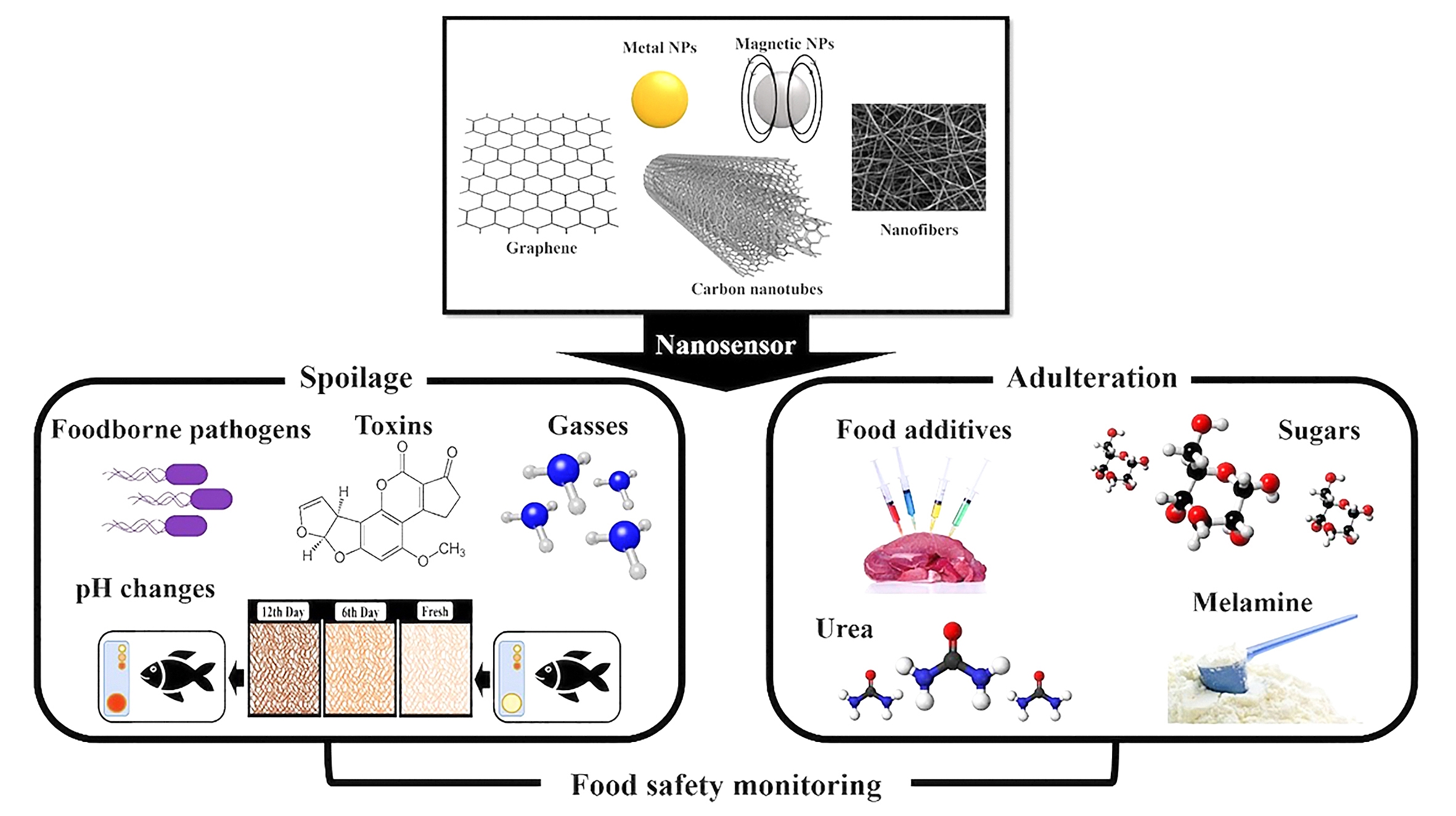Nano-sensors are highly advanced yet precise and sensitive systems capable of detecting one or more specific physical or chemical phenomena based on a particular signal. These sensors operate on a nanometer scale and even react to the presence of several atoms in a single gas, which offer significant enhancements in speed, selectivity, and sensitivity in comparison with conventional chemical and biological techniques. Chemical Nano-sensors usually detect the presence or absence of an analyte or its concentration. Moreover, the Nano-sensors which their recognizing part has a biological nature (such as DNA strands, antibodies, enzymes) are known as Nano-biosensors. Also, the application of different nanomaterials in the construction of biosensors can promote their sensitivity and other properties.
In general, Nano-sensors are fabricated by combining a receptor and a transducer. Any organic or inorganic substance can play the role of receptor and interact with the analyte or its derivatives. However, the role of the transducer is to convert the response to the determinable signal. This signal comes in various forms, including electrical, electrochemical, and optical signals. Nano-sensors are evaluated with several main characteristics. “Selectivity” is a vital characteristic of the sensors that indicates to what extent the system can separate the analyte from the other materials in the sample. In other words, the higher selective sensors can detect and measure the analyte with the least disturbance from the other materials within the sample. The next important characteristic is “sensitivity”. High sensitivity means that with the slightest variations in the analyte concentration, a significant change in the sensor output signal is observed. “Repeatability” is another essential characteristic defined by the word precision. The high precision indicates that the results of the repeated measurements are close together. Accuracy indicates that the measurement results are close to the actual value.
